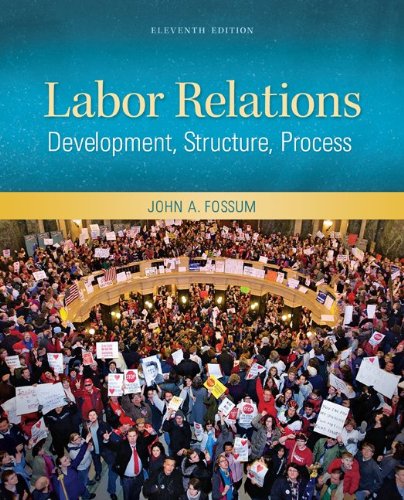
Labor Relations 11th Edition by John Fossum
Edition 11ISBN: 978-0078029158
Labor Relations 11th Edition by John Fossum
Edition 11ISBN: 978-0078029158 Exercise 1
Trace the evolution of the legal status of American unions. What activities were restricted by laws and courts? Did constraints increase or decline with time?
Explanation
Sherman Act of Antitrust stands for an act that protects trade and commerce and prohibits the business entities to undertake anti-competitive policies and procedures. This act provides business enterprises set rules and guidelines to prevent indulging in those actions that prevents healthy competition in the market.
The Clayton Act of Antitrust (1914) is the amendment passed to further clarify and elaborate on the Sherman Act of Antitrust.
American unions had difficulty gaining legal status. Early cases found that collective actions in pursuit of personal interest contravened the public's interest and was hence a criminal conspiracy.
Courts were able to stop strikes and boycotts with injunctions. Despite these setbacks, collective action still occurred. Although the Clayton Act in 1914 removed unions from the Sherman Antitrust Act, courts still could find union activity an illegal restraint on trade.
In 1918 the National War Labor board was established to reduce strikes. Labor's right to organize and bargain collectively was recognized. By the 1930s, public policy toward unions shifted radically.
The Wagner Act of 1935 re-secured organizing rights and specified employer illegal activities that had been ruled unconstitutional when part of the National Industrial Recovery Act of 1933. It also established the concept of exclusive representation in the agency relationship between the union and the employees. Although there was some doubt about the constitutionality of the Wagner Act, the Supreme Court ruled in 1937 that it was constitutional under the Commerce Clause.
The Clayton Act of Antitrust (1914) is the amendment passed to further clarify and elaborate on the Sherman Act of Antitrust.
American unions had difficulty gaining legal status. Early cases found that collective actions in pursuit of personal interest contravened the public's interest and was hence a criminal conspiracy.
Courts were able to stop strikes and boycotts with injunctions. Despite these setbacks, collective action still occurred. Although the Clayton Act in 1914 removed unions from the Sherman Antitrust Act, courts still could find union activity an illegal restraint on trade.
In 1918 the National War Labor board was established to reduce strikes. Labor's right to organize and bargain collectively was recognized. By the 1930s, public policy toward unions shifted radically.
The Wagner Act of 1935 re-secured organizing rights and specified employer illegal activities that had been ruled unconstitutional when part of the National Industrial Recovery Act of 1933. It also established the concept of exclusive representation in the agency relationship between the union and the employees. Although there was some doubt about the constitutionality of the Wagner Act, the Supreme Court ruled in 1937 that it was constitutional under the Commerce Clause.
Labor Relations 11th Edition by John Fossum
Why don’t you like this exercise?
Other Minimum 8 character and maximum 255 character
Character 255


